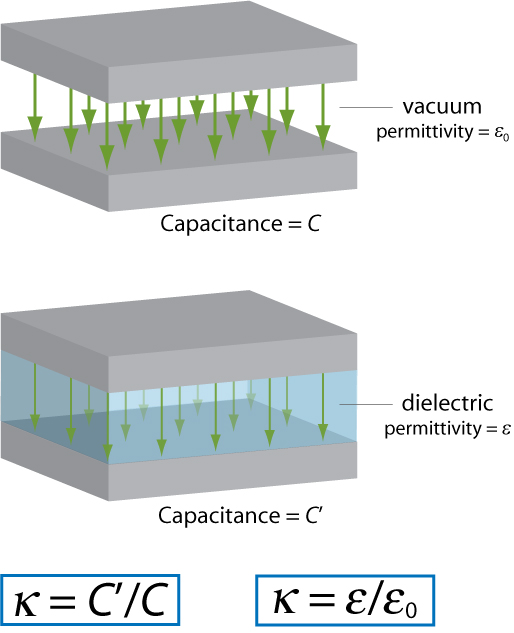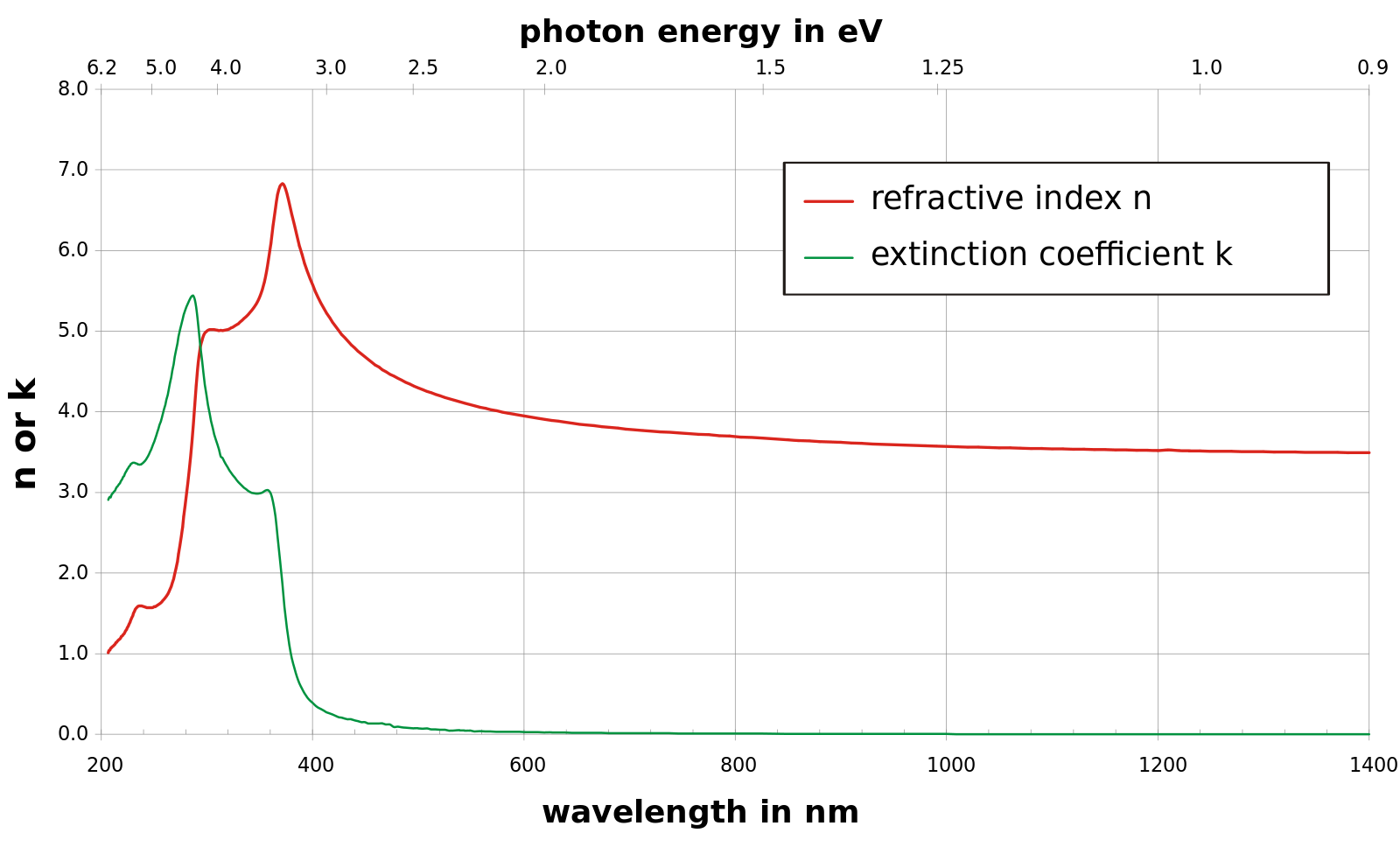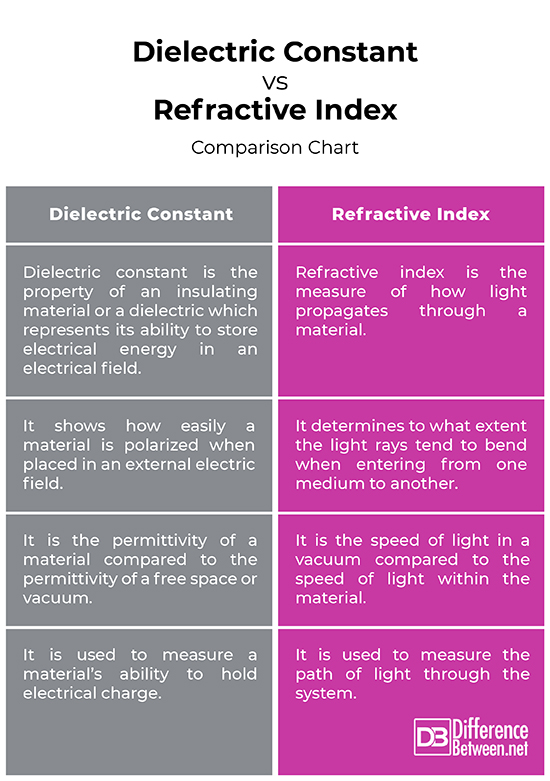Difference Between Dielectric Constant and Refractive Index
Technology has surpassed human expectations over the past few years and it still is creating wonders across all fields of study. Recent developments in microelectronics technologies have created a considerable demand of the low and high dielectric constant materials. As the proliferation of Internet is already making strides across all industrial sectors, the low and high dielectric constant materials prove to be one of the fundamental components of the Internet devices that perform functions like storage, transmission and communication. The materials with low dielectric constant play a crucial role in high frequency or power applications particularly for ULSI interlayer-dielectric applications and microelectronic packaging. Now, the materials with high dielectric constant, on the other hand, have tremendous potential in making DRAM capacitors. Before we dig any deeper, let’s try to understand the basics like what is dielectric constant of a material and how is it related to or differ from refractive index.
What is Dielectric Constant?
Dielectric Constant is the property of an insulating material or a dielectric which describes its effect on an electric field in the region in which the material is situated. Also called the relative permittivity, the dielectric constant of a material represents its ability to polarize a material when subjected to an electric field. It shows how easily a material is polarized when placed in an external electric field. Because the effects of the dielectric properties are not limited to the use of that substance in a capacitor, it often seems useful to combine the dielectric constant with the permittivity constant. Dielectric Constant is one of the essential parameters of a material that affects the propagation of electric fields. It is a relative measure of ratio of two similar quantities, so it is a dimensionless measure.
What is Refractive Index?
The optical properties of most of the materials can be characterized by a single number called the “refractive Index”, which is used to solid, liquid and gas. In simple terms, refractive index is the measure of how light propagates through a material. It is the ratio of speed of light in a vacuum to the speed of light in a medium. It is also a dimensionless number which determines to what extent the light rays tend to bend when entering from one medium to another. The study of optics remains a fundamental area of physics and engineering, although it is one of the oldest topics of interest in science. It was first conceptualized by a Dutch mathematician Willebrord Snell, who in 1621 wrote the formula for the principal of refraction, or the bending of light ways as it passes from one medium into another.
Refractive Index (n) = c/v, where c is the speed of light in vacuum and v is the speed of light in a medium
Difference between Dielectric Constant and Refractive Index
Definition
– The dielectric constant is the characteristic of an insulating material or a dielectric which represents its ability to store electrical energy in an electrical field. It shows how easily a material tends to be polarized when placed in an external electric field. Refractive Index, also called index of refraction, is the measure of how light propagates through a material. It determines to what extent the light rays can bend, or refract, when passing from one medium to another. It is defined as the ratio of speed of light in a vacuum to the speed of light in a medium.
Unit of Measurement
– The dielectric constant is a ratio of two similar entities; it is the permittivity of a material compared to the permittivity of a free space or vacuum. So, it is a relative measure which means it is a dimensionless quantity with no unit of measurement. It is represented by the greek letter kappa “κ”. Similarly, refractive index is also a ratio of two like entities; speed of light in a vacuum compared to the speed of light within the material. Therefore, refractive index is dimensionless or unitless because the units cancel each other out.
Dielectric Constant vs. Refractive Index: Comparison Chart
Summary Dielectric Constant vs. Refractive Index
The dielectric constant is the property of an insulator which determines its ability to hold electrical charge in an electrical field. It simply identifies the extent to which an insulating material can hold electrical charge before it’s being polarized or loses its electrical properties. It is the permittivity of a material compared to the permittivity of a free space or vacuum. The refractive index, or index of refraction, is a measure of how fast a light travels through a material. It is a dimensionless number which determines the extent to which the light rays is refracted or bent when passing from one medium to another.
- Difference Between Caucus and Primary - June 18, 2024
- Difference Between PPO and POS - May 30, 2024
- Difference Between RFID and NFC - May 28, 2024
Search DifferenceBetween.net :
Leave a Response
References :
[0]Image credit: https://commons.wikimedia.org/wiki/File:Refractive_index_of_silicon_(300_K).svg
[1]Image credit: https://commons.wikimedia.org/wiki/File:Dielectric-constant.jpg
[2]Nalwa, Hari Singh. Handbook of Low and High Dielectric Constant Materials and Their Applications. Amsterdam, Netherlands: Elsevier, 1999. Print
[3]Leu, Jihperng. Low Dielectric Constant Materials for IC Applications. Berlin, Germany: Springer, 2012. Print
[4]Woodward, Bill and Emile B. Husson. Fiber Optics Installer and Technician Guide. Hoboken, New Jersey: John Wiley & Sons, 2006. Print
[5]Houk, T. William, et al. University Physics: Arfken Griffing Kelly Priest. Orlando, Florida: Academic Press, 2016. Print



